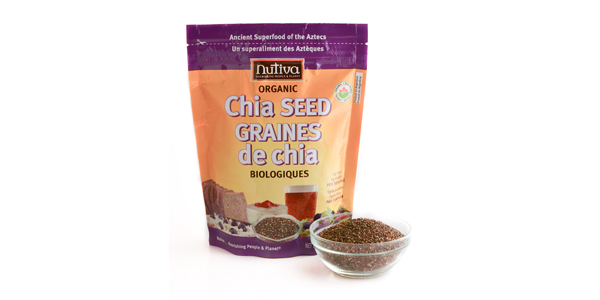Ch-ch-ch-chia! Do you remember those Chia Pet commercials that aired in the 80’s where these cute little plant holders would grow sprouts that looked like hair? Well, the seeds that were used are what you see in many health food stores today – chia seeds. In addition to making a cute potted plant, chia seeds are a good source of fibre, protein and omega-3 fats. They are grown in Mexico and Guatamala and are sold in both black and white varieties.
They look like poppy seeds (except they are even smaller) and can be used a variety of ways because they are neutral in taste. Chia seeds can be sprinkled on salads, added to soups, smoothies and oatmeal. They become gel-like in consistency when added to water so some people make them into a pudding or use them as an egg substitute. Unlike flax seeds, they don’t have to be ground up in order to be digested.
One tablespoon of chia seeds contains 2 grams of the omega-3 fatty acid alpha linolenic acid (ALA). ALA is a plant based omega-3 fatty acid which is also found in flax seeds, walnuts, tofu and vegetable oils. Health Canada recommends that men aim for 1.6 g of ALA/day and women aim for 1.1 g ALA/day. There is currently no upper limit set for ALA.
For people who don’t eat a lot of seafood, tofu or nuts and seeds, I can see how having a tablespoon of chia seeds can be a good alternative to getting their omega-3’s. I know that I personally have a hard time ensuring that I get enough omega-3’s each day so it’s nice to see that chia seeds contain so much in such a small amount.
The folks at Nutiva were kind enough to send me bags of their black organic chia seeds. I know a lot of my colleagues have heard about chia seeds but have not had the opportunity to try them so I sent them around to give us all a chance to try them out and share our experiences.
Have you tried chia seeds? How do you use them? What do you think of them?
